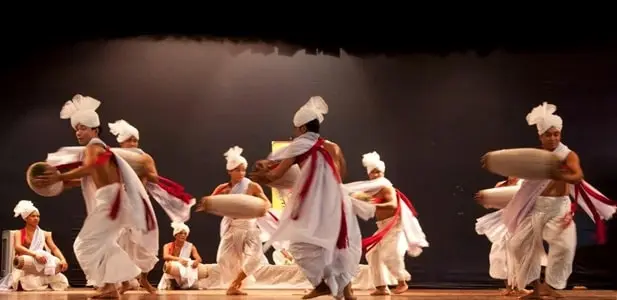In the northeastern corner of India, Manipur, the small state is filled with so many elements of its cultural heritage. The region is filled with so many artistic expressions, dance being one of them. Fluidity, grace and a profound sense of spirituality surround the dance forms of Manipur. If you are thinking to discover these wonderful dances, this blog can be your best guide to get a proper taste of them.
History and Origins
The rich culture of Manipur gave rise to Manipuri dance. Manipuri dancing appears in ancient texts and art. It began as Krishna and Radha devotion in Manipur temples. It adopted Tibetan and Southeast Asian culture.
Forms of Manipuri Dances
Traditional and folk Manipuri dancing are distinct.
Classical Manipuri Dance:
Ras Lila
Ras Lila is the most revered Manipuri dance. In this form of dance Krishna and Radha’s sweet love story is important. Costumed dancers recreate Krishna’s playful and amorous antics here. Slow, delicate movements, precision footwork, and expressive faces characterize the dance magnificently.
Nata Sankirtana

Manipuri Nata Sankirtana combines dance, music, and story. Male dancers and musicians playing Manipuri pung and kartal perform the whole dance. In this dance legendary dances make acrobatic moves.
Lai Haraoba
The other Manipur dances include Lai Haraoba, performed during religious events. This traditional Manipuri dance celebrates various deities. The dance features intricate hand gestures and symbolic dances by men and women in elaborate costumes and masks.
Folk Manipuri Dance:
Maibi Dance
In Manipur, the Maibi priestesses conduct a traditional dance. Priestesses with magical powers dance to heal and exorcise. Powerful movements, skilled footwork, and dramatic attitudes characterize Maibi dance.
Khamba Thoibi Dance
The classic Manipur dance Khamba Thoibi tells Prince Khamba and Princess Thoibi’s love story. It is a vibrant dance by men and women in bright costumes.
Symbols and Meaning
Manipuri dance is cultural, religious, and spiritual as well as entertaining. Dance is utilized for spiritual connection and storytelling during religious festivals, rituals, and ceremonies. Key aspects of significance:
Devotion Religion
Hinduism and Vaishnavism base Manipuri dance. Ras Lila, where dancers convey Krishna and Radha’s love, is revered.
Storytelling
Manipuri dance and music convey mythological, historical, and cultural tales. This protects and transmits regional oral traditions.
Costumes and Makeup
Manipuri dancers use bright clothes and complex makeup. The Manipuri-inspired costumes enhance the dance’s beauty and grace. Some Manipuri dancewear and makeup:
Cymbals and drums
Male Ras Lila and Nata Sankirtana dancers perform pung and kartal. These instruments add melody and rhythm.
Conclusion
There is no doubt that the traditional dance of Manipur is a celebration of its spiritual essence. For centuries such spiritual knowledge and moves have been imbibed into these dances. A profound meaning is imbued in these dances that only the dance and art lovers can unearth from them.
Related Topics:
Santosh Kumar, He is a SEO + Blogger have 12 years of experience in writing tutorial, informative and product reviews topics.
Page Contents

